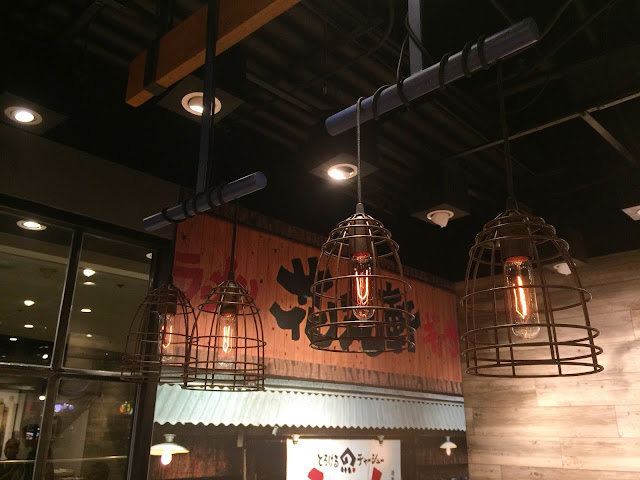Now, before you get any crazy ideas as to why I was at a motel, let me be clear that I was there solely for the food. I went to Cavite with my boyfriend Martin, and his mom. On our way home, his Uncle said that he's heard that this particular Korean restaurant is good. However, some people are hesitant about trying it because of its location. No one wants to risk being seen coming in and out of that place for fear that he or she might be mistakenly judged for being there other than to eat some Korean food.
The inside of the restaurant, much like its exterior is modest. No fancy decor aside from the the walls having various pictures of Korean food I was unfamiliar with. The names of the dishes underneath the pictures weren't much help either since they were in Korean. It's the kind of place where judging from your first impression, your dining experience can either go very bad or very well. I, of course, hoped for the latter, and the several groups of Korean men dining there were very encouraging. If Koreans are actually eating there, the food must be authentic and good.
Since we were quite overwhelmed by their extensive menu, we decided to go for something familiar -- shabu-shabu. While waiting for our order, we were served a beautiful spread of complimentary appetizers in small plates called Banchan. The appetizers were mainly vegetables that were either a spicy pickled dish or lightly sautéd with a sweet flavor. One thing you'll notice is that crispness is key with these dishes. The vegetables still have a nice crunch when you bite into them despite being pickled, and even those sautéd were not overcooked. I've always seen and known about Banchan whenever I watch travel shows, and I always wondered why it seems to be the favorite part of the meal of anyone who enjoys Korean food. After trying it for myself, I now understand why. Let's just say once you try really good Banchan, you'll find yourself salivating for some pickled radishes.
Then came out a humungous platter of towering food, filled with the bounties of both land and sea. We were presented with this glorious plate of seafood, beef, vegetables and even processed food. The fun thing about shabu-shabu is that you cook your own food table side. The broth was simple enough that it could be flavored with whatever you put in it. The crabs, shrimps and squid were so fresh and delicious that their flavors were what you could predominantly taste. With so many ingredients floating in the pot, you would think that those tastes would just clash with each other. However, the broth still had a mild, clean flavor, allowing you to eat way more than you thought you could. While we were eating, a Korean man came out from the kitchen into the dining area, and the red liquid splatters on his shirt give away that he was the one cooking. He acknowledged us and shyly smiled as we tried to communicate to him that his food was delicious. Having the Korean owner cook the food himself definitely assured us that the food was indeed authentic.
Although we initially had reservations about eating at this Korean restaurant that I don't even know the name of because I can't read their Korean signage, I had two important realizations from this dining experience. First, Korean food is good. I mean, really good. Before this, Korean food to me was simply kimchi and bibimbap, and yet the Banchan alone opened my mind to the complex flavor profile of Korean cuisine. Second, in the same way that one must not judge a book by its cover, one must not also judge food based on the restaurant's logistics. If you want to find good food, don't be afraid to try hole in the wall places. In our case, even if it's in a motel by the side of the road.











